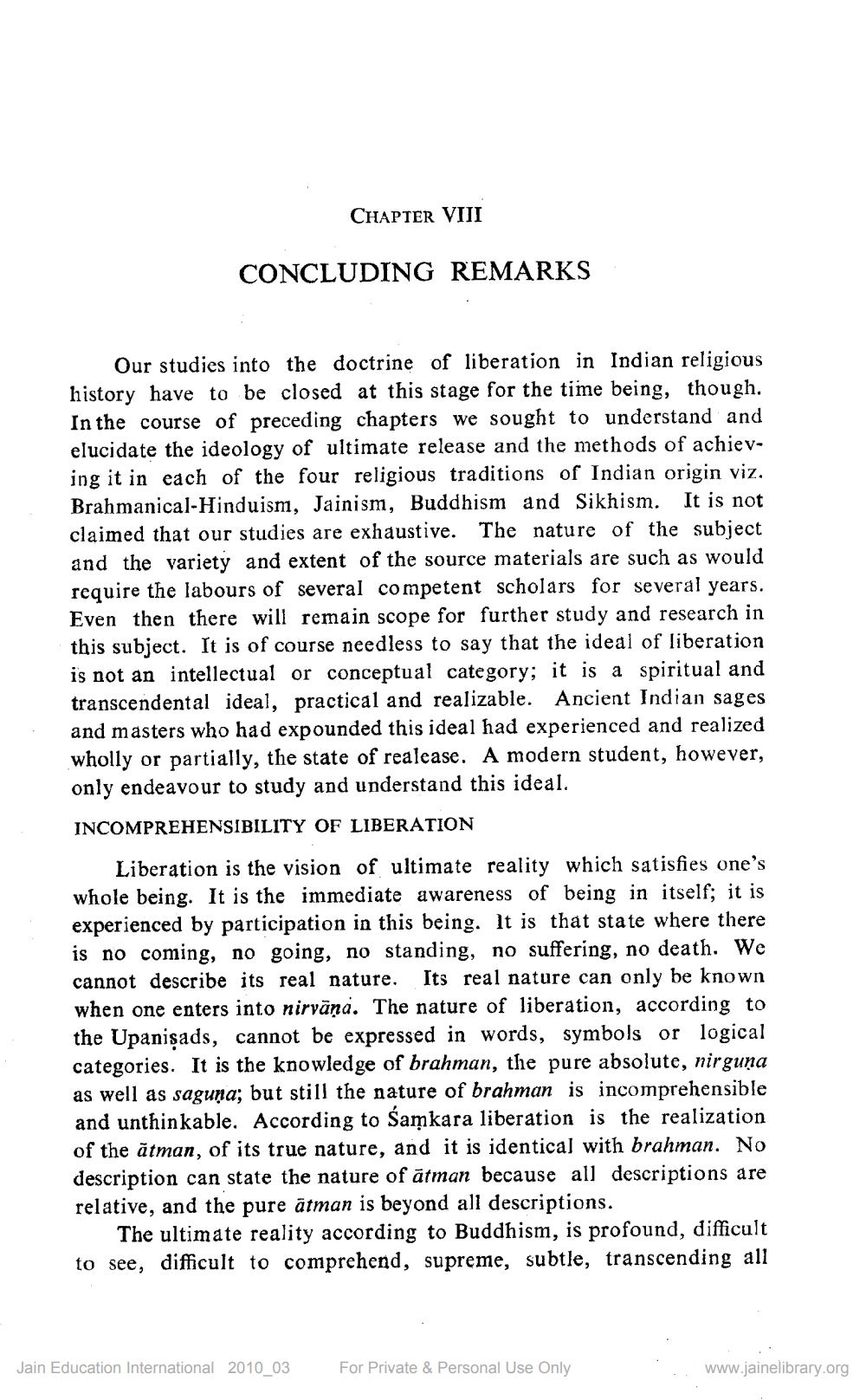________________
CHAPTER VIII
CONCLUDING REMARKS
Our studies into the doctrine of liberation in Indian religious history have to be closed at this stage for the time being, though. In the course of preceding chapters we sought to understand and elucidate the ideology of ultimate release and the methods of achieving it in each of the four religious traditions of Indian origin viz. Brahmanical-Hinduism, Jainism, Buddhism and Sikhism. It is not claimed that our studies are exhaustive. The nature of the subject and the variety and extent of the source materials are such as would require the labours of several competent scholars for several years. Even then there will remain scope for further study and research in this subject. It is of course needless to say that the ideal of liberation is not an intellectual or conceptual category; it is a spiritual and transcendental ideal, practical and realizable. Ancient Indian sages and masters who had expounded this ideal had experienced and realized wholly or partially, the state of realease. A modern student, however, only endeavour to study and understand this ideal. INCOMPREHENSIBILITY OF LIBERATION
Liberation is the vision of ultimate reality which satisfies one's whole being. It is the immediate awareness of being in itself; it is experienced by participation in this being. It is that state where there is no coming, no going, no standing, no suffering, no death. We cannot describe its real nature. Its real nature can only be known when one enters into nirvāņa. The nature of liberation, according to the Upanişads, cannot be expressed in words, symbols or logical categories. It is the knowledge of brahman, the pure absolute, nirguna as well as saguna; but still the nature of brahman is incomprehensible and unthinkable. According to Samkara liberation is the realization of the atman, of its true nature, and it is identical with brahman. No description can state the nature of ātman because all descriptions are relative, and the pure ātman is beyond all descriptions.
The ultimate reality according to Buddhism, is profound, difficult to see, difficult to comprehend, supreme, subtle, transcending all
Jain Education International 2010_03
For Private & Personal Use Only
www.jainelibrary.org




